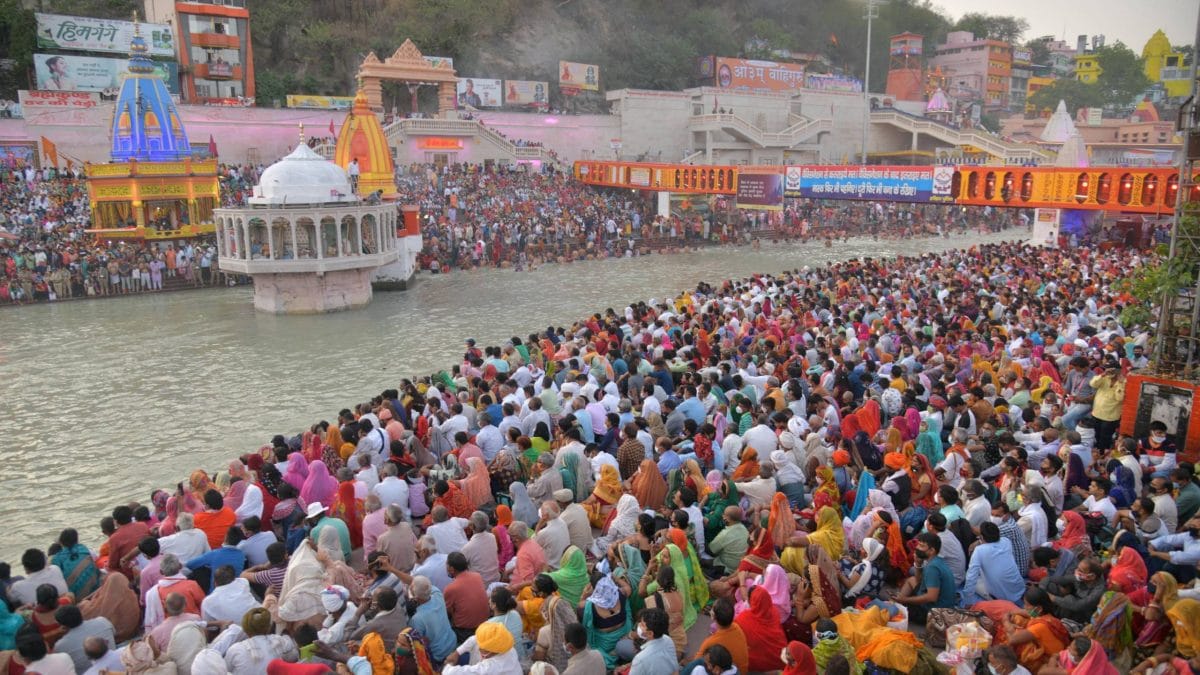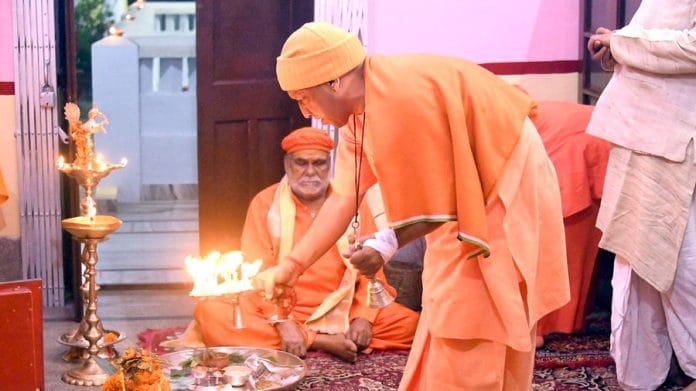The role of “area of math” will be crucial in the ongoing assembly election in Uttar Pradesh. The Gorakhnath math in Gorakhpur, which voted Thursday, and the Kabir math and Guru Ravidas math in Varanasi and Shiv Narayan math in Ghazipur’s Chandawar, where voting will be held in the seventh and last phase on 7 March, will all play a critical role in this political battle because they have a strong influence over the marginalised and the poor.
The Gorakhnath math, in particular, occupies an interesting position. It is popular among all the castes but is central in the lives of most backward castes, or MBCs, and marginal communities like weavers, farmers, saperas (snake charmers), yogis, and landless Nats across Gorakhpur and other parts of eastern Uttar Pradesh.
The Kabir math too has an intense influence among MBCs, Dalits and marginalised communities, and so do the Ravidas math and Shiv Narayan Ashram. In this article, I discuss how maths influence the electoral politics of the polling areas in Uttar Pradesh.
Also Read: ‘Maut, mahant aur mystery’ — Hindi news channels had a headline competition this week
How maths work in UP
Maths not only work as a religious centre in Uttar Pradesh but also engage in social welfare programmes in the region. They have earned the trust of the local communities and run schools, colleges and hospitals. Some of these sects and maths have their ‘branches’, ‘gaddis’ and temples scattered across this region, with their own ‘mahants’ (head priests) and ‘sewadars’, who, more often than not, command the respect and influence of the local people, especially poor and women.
These local ‘mahants’ are nominated by the head of the math of a particular sect. From puja rituals to shadi-vyah (marriage), the presence of these ‘mahants’ in a variety of social engagements help them create a hegemonic influence over people. They also organise teerth yatras such as kumbh snan (Kumbh bathing) from various places and are involved in other kinds of religious tourism.

In one of the bastis of the Saperas, located in eastern UP, we observed the influence of the Gorakhnath math. Describing himself as an old sapera, a man said: “We are Nath Panthi, and hence use the title ‘Nath’ with our name. Our peeth (highest seat) is the Gorakhnath math in Gorakhpur. Yogi Adityanath is our head mahant, we respect him a lot.”
Similarly, a small group of the basti follows the Kabir Panth and identify themselves as the disciples of their mahant, Sant Vivek Das. The Dalit communities in various villages in and around Ghazipur-Ballia districts in a similar vein follow Chandawar’s Shiv Narayan gaddi.
We observed that in the absence of political leaders representing their cause, small communities still vote on a ‘math-to-math’ basis. The Sapera clan, for instance, rely on maths to provide them with a socio-political representation. A young man from the community told us: “Hum log hamesha jahan munh hota hai wahi vote dete hain” (We always vote where our mouths are), and ‘vote the party supported by our maths.’
Also read: Yogi is Baba, Mahant, or Gorakhnath. Akhilesh’s image is all about ‘change with continuity’
The legacy of mahants
Although the mahants don’t usually participate in politics, they play an important role in deciding who wins and loses the election in their zones of influence. In that sense, the Gorakhnath math has always remained an active player. Former Lok Sabha member Digvijay Nath who joined Congress in 1920 and was arrested for taking part in Chauri Chaura movement, was a mahant from Gorakhpur. He joined the Hindu Mahasabha in 1937 and became one of the main initiators of the Ram Janmabhoomi movement even in the pre-Independence era. He contested the election as a Hindu Mahasabha candidate and became a Member of Parliament (MP) in 1967.
His successor, Mahant Avaidyanath, also took an active part in politics and emerged, arguably, as the more important leader in the Ram Janmabhoomi movement. Winning consecutive elections, Avaidyanath remained an MLA and also went on to become the MP of Gorakhpur as a Bharatiya Janata Party leader. It was his tradition that Yogi Adityanath continued by becoming a member of parliament in 1998.
The Gorakhnath math’s ‘political remembrance’ is still relevant as we see Adityanath contesting in the UP assembly election as the chief minister of the state. In one of the villages around Gorakhpur, an elder said that the Gorakhnath mahants have had a history of contesting elections. Earlier, they used to have a ‘ghod sawar’ (horse rider) symbol.
Not only political influence, the maths, through their welfare programmes, have forged a close bond with various communities in the region and are an important source of Hindutva ideology. The Gorakhnath math, with its Hindutva-inspired politics, has made this expansion possible. Hindu Mahasabha to BJP, this part of Uttar Pradesh has remained a centre for Right-wing politics even in the era of Congress dominance.
Although there are many factors influencing the 2022 Uttar Pradesh election at large, securing the support of maths, especially in the last phase, will be a make-or-break for political parties. The followers of the maths may be working for various parties but the political inclination of the highest seat, the mahants, will play a crucial role in swaying the votes of their disciples and followers. It is through their vast and intricate religious and social network that the maths will influence the politics of Uttar Pradesh.
The author is Professor and Director at the G.B. Pant Social Science Institute, Allahabad. He tweets @poetbadri. Views are personal.
(Edited by Srinjoy Dey)






